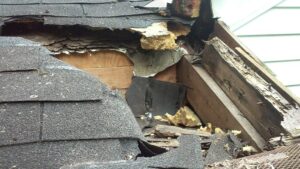October 29, 2025
Raccoon Season in Houston: Why October Is Peak Attic Invasion Time
When the Houston heat finally eases up in October, most of us are thrilled to open the windows and enjoy the cool breeze. Unfortunately, we’re not the only ones who love Houston’s fall weather — raccoons do too. This is the season when raccoons start looking for warm, safe places to nest, and your attic is at the top of their list.
If you’ve been hearing strange noises at night or smelling something off in your attic, you could be housing an uninvited guest.
This post breaks down why October is raccoon season in Houston, how to recognize the warning signs, what kind of damage they cause, and how professional raccoon removal in Houston can save you from thousands in repairs.
Why Houston’s Climate Makes October Raccoon Season
Houston’s mild winters and high humidity create ideal conditions for raccoons year-round, but October triggers a perfect storm:
-
Cooler nights push raccoons to find warm shelter.
-
Increased rainfall drives them away from flooded dens.
-
Food availability shifts — raccoons scavenge for scraps near homes and trash bins.
Neighborhoods like The Heights, Cypress, Katy, and Bellaire are particularly active this time of year thanks to heavy tree cover, older homes, and easy access to attics via vents or rooflines.
Signs of a Raccoon Infestation in Houston Homes
If you suspect something’s living above your ceiling, here’s what to look (and listen) for:
-
Thumping or scratching sounds at night — raccoons are nocturnal.
-
Strong, musky odors from droppings or urine.
-
Torn roof vents or soffits where they’ve gained entry.
-
Insulation shredded into bedding piles.
-
Droppings the size of small dog feces scattered in corners.
A professional raccoon inspection in Houston can confirm whether you’re dealing with raccoons or another critter like rats or squirrels.
Why DIY Raccoon Removal Doesn’t Work
Raccoons are clever and strong. Many homeowners try:
-
Traps (raccoons often outsmart them).
-
Bright lights or loud music (they adapt).
-
Poison or repellents (illegal and dangerous).
The result? More damage and a lingering odor that spreads through your ductwork. Raccoons can also become aggressive when cornered — especially females with kits. Professional removal ensures safety, humane handling, and full cleanup afterward.
The Hidden Costs of Raccoon Damage
Raccoons cause serious structural and health risks:
-
Chew electrical wires → fire hazard.
-
Rip insulation → higher energy bills.
-
Damage shingles and soffits → roof leaks.
-
Leave droppings that spread parasites and bacteria.
A single raccoon family can rack up over $5,000 in repairs if not handled quickly.
Professional Raccoon Removal in Houston: Step-by-Step
-
Inspection: Identify entry points and confirm activity.
-
Removal: Humane trapping or exclusion (one-way exits).
-
Cleanup: Safe removal of droppings + odor treatment.
-
Repairs: Replace insulation, seal rooflines and vents.
-
Guarantee: 15-month warranty on all exclusion work.
Critter One Houston’s approach is designed to handle both the removal and the restoration, giving you a one-and-done solution.

Preventing Future Raccoon Infestations
After removal, prevention keeps your home secure:
-
Seal attic vents with metal mesh.
-
Keep pet food + trash sealed tightly.
-
Trim tree limbs at least 6 feet from the roof.
-
Schedule annual attic inspections.
These small steps make a huge difference in raccoon-prone neighborhoods.
Houston Homeowners: Don’t Wait Until It’s Too Late
If you’re hearing scratching or smelling something “off” in your attic, now’s the time to act. October is peak raccoon invasion season in Houston, and every day you wait can mean more damage.
Critter One offers:
Free inspections
Humane raccoon removal
Full attic + roof repair
15-month guarantee
Proudly serving Houston Heights, Cypress, Katy, Bellaire, Sugar Land, Memorial, and surrounding areas.

